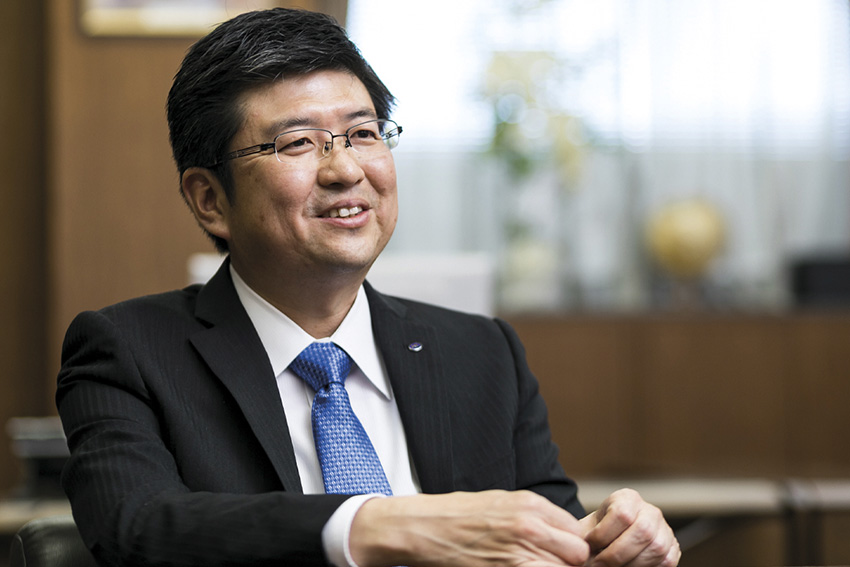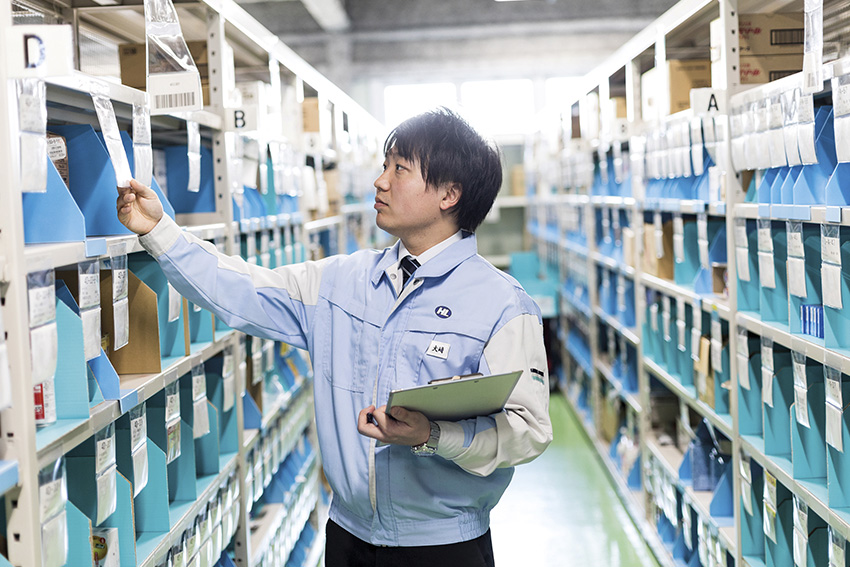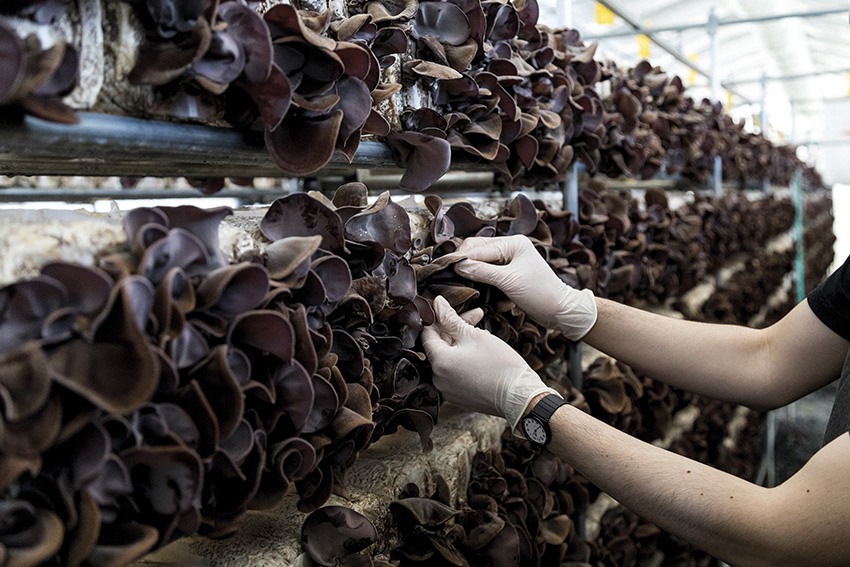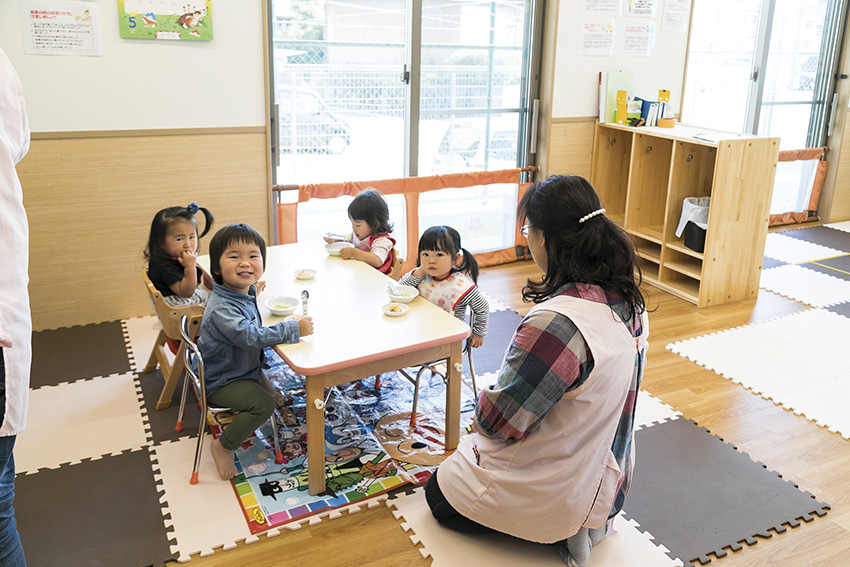Honda Logicom leverages technology and sustainability to emerge as a key player in Japan's evolving logistics landscape.

We would like to start by getting your take on the recent global disruptions when it comes to logistics. If we reflect on the pre-Covid era, Japan was largely left out of the logistics sector thanks to regional competitors such as China which dominated that sector. However, recent disruptions brought about by geopolitical tensions between the US and China have seen big US and EU actors look toward reliability as a key aspect of their day-to-day dealings. Japan has emerged as a very viable alternative and we have seen TSMC opening a new fab in Kumamoto for example. With this, Japan is seeing itself as a production hub for the semiconductor industry, which will need a tailwind of logistics services to follow. Do you believe that it is a good time for Japan when it comes to the logistics sector? How do you believe Japan’s role in logistics will evolve in the years to come?
I agree with the idea that Japan is attracting attention as an alternative hub for logistics. This is of course due to geopolitical reasons as you have mentioned. However, Japan possesses the high levels of technology required to build factories, and the existing infrastructure is also highly advanced. I believe that Japan has the ability to meet any demands coming from the global market. Research for advanced technology is also evolving quite rapidly. Therefore, Japan can offer many advantages to the countries that choose Japan as a production hub.
Many Japanese companies are making relentless efforts when it comes to research for advanced technology. We have a close relationship with Toyota Motors, so we are well aware of their R&D efforts. That is why I believe we have a lot of room for further technological growth. This is not limited to large corporations. It also applies to SMEs as well. They too possess high levels of technology. The overall technological development in Japan is superior when compared to other countries.
One issue that Japan has been facing when it comes to logistics is what is known as the ‘2024 problem’ which relates to the new overtime regulations that the Japanese government has introduced. They are capping the number of hours of overtime that truck drivers can do at 960 hours per year. This has also been exacerbated by the fact that Japan has a declining population which is putting pressure on recruiting truck drivers. The Japanese government has stepped in and said that they want to introduce initiatives to increase efficiency but also improve the working conditions for existing truck drivers, and if they want to have alternative sources of income in their other hours, they can do so. What do you think about these new regulations? Do you believe that they will be effective and efficient? How do you perceive the evolving multimodal transport system in Japan? They have talked about doubling rail and shipping, and even using shinkansens as alternatives. How do you perceive these new modes of transport filling that gap?
Our truck drivers are not directly hired by us. However, we do have operators at our warehouses. Typically, warehouse operators tend to do a lot of overtime, and sometimes they work more than 80 hours of overtime each month. Around ten years ago, we started an initiative to reduce overtime for our operators by enhancing the efficiency of our operations as well as digitalizing some of our operational processes. As a result, right now we only have a few operators that are working more than 45 hours of overtime per month. Also, not many people have been working overtime recently. The same goes for the truck drivers. You cannot immediately adjust yourself to these new regulations. It requires time for preparation. If you take sufficient lead time, then I believe that you will be able to respond to the new regulations. However, unless you are prepared for the future, it is very difficult to survive in this industry. The logistics industry changes every ten years. We are now moving toward 2030 and working on the logistics technology revolution. If you are not able to catch up with this revolution, you will not be able to survive.
If you look at the third-party logistics (3PL) market, we are seeing an era of great transformations. First, there is the rise of e-commerce platforms that are increasing in volume every year and therefore increasing the demand for logistics services. Combined with this is the global aspect of e-commerce which allows for goods to be shifted quickly and efficiently across the world. The second transformation, as you mentioned, relates to technological advancements such as automation and DX processes, and the third is that we are seeing more and more SMEs outsourcing their logistics needs, which creates an extra stream of revenue. Looking first of all at the short term over the next year or so, and secondly at the midterm and the next five years, what do you think are going to be the next key drivers and disruptions in the 3PL segment?
3PL was established in the 1990s. while e-commerce became popular in Japan around the year 2000. The logistics companies that were not able to address the needs of e-commerce were not able to survive. Back in 2003, we created a structure whereby we were able to deliver the goods that were ordered the previous day. The key driver for growth is the ability to foresee the future and catch up with the changes that are occurring. Incorporating new technologies is key. For example, we do not have the ability to develop AI. However, we have been cooperating with an AI venture company to establish a system to predict the work volume for the next month. We have been researching that for the last two years.
More and more logistics sites are introducing tablets, so applications for tablets are required. We established a site in Asia to develop applications for tablets. We did this by collaborating with another company. Collaborations are very important, and we are collaborating with many different companies for new technology. It is also important to not focus on your existing successes. While it may have been a success in the past, it may not be applicable for the next ten years. You must instead consider what will be the key drivers for future success.

There is a series of stages where you can see these new technologies being implemented. When it comes to digital procurement or digital asset tracking, for example, we know that it has been adapted to full-scale by companies in the industry. When it comes to scaling up technologies such as AGVs which are being used inside warehouses, some companies are using them while others are not. If we consider cutting-edge technologies, examples include last-mile delivery drones, AI for predicting demand for the upcoming months, and even hydrogen-based vehicles. Could you give us an outline of some of these technologies and the stages that you think Japan is at when it comes to these developments? In terms of your company, which of these technologies would you like to implement in the future to improve your workflow?
We are currently focusing on technology to address the labor shortage. One of the technologies that we are incorporating is Autonomous Mobile Robots (AMR). That is something that you might see in restaurants. This year, we introduced 20 units of AMR into our logistics operations. The robots carry the boxes, and the goods are taken out by people. We are combining human manpower with robots to enhance the efficiency of our operations, and we are deferring the work that does not require humans to the robots. One year ago, we found that our efficiency would be improved by 1.5 times if we used robots. If you consider Amazon, all of their operations are digitalized using robots. However, that is quite costly for SMEs. Therefore, we would like to introduce the minimum level of robots and have them work together with humans.
One of the key trends in the logistics field is decarbonizing the industry and reducing its overall environmental impact. In the upcoming years, there are a series of regulations being introduced not only for the shipping sector but also for 3PLs and other types of logistics providers. However, the regulations and objectives that governments have in mind sometimes do not meet the reality of what is possible to do today. A great example of that is everyone wanting the shipping industry to only use biofuels which is not realistic with today’s technology. First, can you run us through the efforts that your company has made to decarbonize its operations, and secondly, what do you see being the next obstacles or challenges to making your activities more green and more decarbonized?
We specialize in warehouse operations and more than 10 years ago, we received ISO 14000 certification. Since then, we have been working on decarbonization by changing the light bulbs to LED, classifying the garbage, and also switching from paper-based operations to digital. We have done what we can do from this perspective. Utilizing forklifts powered by hydrogen is also something we could do, as we have been already using them for Toyota’s logistics.
When it comes to your business divisions, your company has been very successful in the 3PL market, having pivoted towards the e-commerce side of the business in the early 2000s. We would like to ask you about your role in consultancy and system development, specifically when it comes to developing new more efficient warehouse operations for your clients. We know that you go to each location, conduct surveys, and tailor the system according to the customer’s needs and perspective. What are the typical challenges or inefficiencies that you identify at the site of your clients each time, and what services are you able to provide that others cannot by combining the years of experience you have?
At large companies, their operations are often described in manuals. However, when it comes to SMEs, they tend to rely too heavily on the people who work there. The know-how is only known by the people at the company. Our service is to put this expertise into the system and provide that to our client. The foundation for this service was Toyota’s production scheme. By utilizing this scheme, anyone can carry out the operations and you can visualize the process and reduce waste. We install the know-how into the system so the companies can reduce their overreliance on human resources.
Due to our use of Toyota’s scheme, we have large clients such as KDDI, Toto, and Panasonic. This scheme can be applied to any industry, and we were able to address the challenges linked to e-commerce by using Toyota’s methods. Having Toyota’s scheme as the foundation of our business is one of our main strengths.

We saw that historically you have been a partner of Toyota and that you have a track record of working with large companies such as Panasonic, KDDI, and Toto as you mentioned. In more recent times, however, we got the impression from our research that the company has changed its focus slightly and that you are now also targeting SMEs. The mail-to-order system for example that you have developed is great for e-commerce and SMEs. First, is this change of focus accurate, and if so, what are the core skills and learnings that you have gained by working with these large companies that you can bring to the SME sector to help them improve?
Today, Toyota is of course our most important customer. About 30 years ago, we only worked for Toyota. At that time, our management team thought that if Toyota ever went bankrupt, we would also fail. We needed to expand our customer base, and that was why we started our 3PL business. This challenging spirit was key to our success as we focused on other clients too. In 2011, the Great East Japan Earthquake led to factories stopping their operations. All the companies that worked solely for Toyota lost all of their work. However, at that time, we were already working for other companies such as pharmaceutical companies and we received a lot of orders for logistics. We also temporarily hired workers for Toyota’s logistics. Overcoming the challenges that our predecessors faced allowed us to continue to be successful.
Your business goes beyond the framework of a typical logistics company. We know that in 2017, you established Kasugai Farm to produce wood-ear mushrooms, and you also have daycare centers to help facilitate your employees’ daily work lives. Can you tell us about the social aspect of your business and how you are helping not only the work life of your employees but also contributing to local areas and regional revitalization here in Japan?
The primary goal for our company is to make a profit. However, when it comes to utilizing this profit, we want to make our employees happy and contribute to society. That was what led to the establishment of Kasugai Farm and our daycare centers as well as our acquisition of Ichinotani Ltd. Those initiatives will ultimately contribute to the community and enhance our corporate value. For example, if we bid with our competitors, our social contributions and SDG efforts will give us an advantage. It will also lead to the further growth of the company. If we continue to grow and make more profit, we will be able to return more to our employees and contribute further to society.
Looking to the future, are you currently seeking further M&As and if so, what type of company or expansion are you targeting?
Ichinotani was a traditional Japanese restaurant with a long history and was located in an area of town with a significant population decline. That was why we made the acquisition. We wanted to contribute to the revitalization of that area. The acquisition was not driven by profitability purposes. Going forward, if we can contribute to society through a particular M&A, we will choose to do so. It will not be driven primarily by business success. Furthermore, we are currently collaborating with some startups to help them grow, and we are also trying to improve our human resources through these initiatives.

Your company has operated overseas since 2009 when you established your subsidiary in Vietnam, and we know that you have a very strong presence there today. This year marks 15 years since you started your first overseas subsidiary. What evolution has taken place in terms of your overseas business within that period, and moving forward, what is the next step for the development of the business? Are you going to relocate to new places or are you looking to enhance your presence in the countries you are already established in?
We decided to enter the markets as the markets in Southeast Asia are not mature and the region presents a lot of business opportunities. Also, going to Vietnam quite early led to us having large companies as clients. Moving forward, we are now hiring employees from Taiwan and South Korea to help us further expand in the Asian region. However, that does not have to be through our logistics business. Rather, I am asking our new Taiwanese employees to think about a new business outside of the logistics sector. In the future, you may find us present overseas in Asia or Europe with a completely different business.
Last year, your company celebrated its 60th anniversary. Please imagine that we return to interview you again in nine years for your 70th anniversary as a company. What goals would you like to have achieved by then? What would you like Honda Logicom to look like in 2033?
We are trying to diversify ourselves. While we want to continue our logistics business, we also want to operate outside the logistics sector. By 2033, I would like for people to be asking what business Honda Logicom is involved in. My main goal is to have a lot more businesses by then. I have been talking about this with our younger generation of employees and new graduates, and they are seriously considering these plans.
Do you have any preferences as to what the next pillar of your business will be?
I would like it to be a business that makes people happy.
For more information, visit: https://honda-logi.com
0 COMMENTS